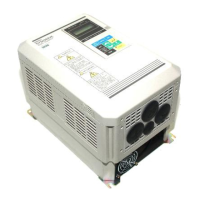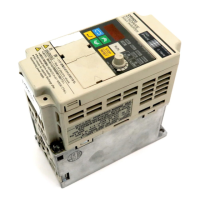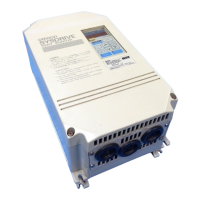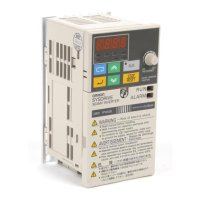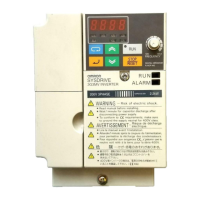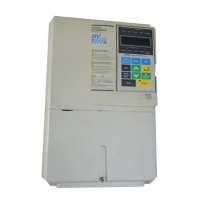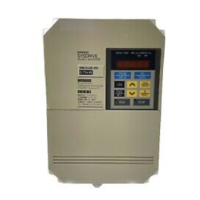6-84
• With this setting, the multi-function input resets faults that have occurred.
• When a fault has occurred, be sure to find out what kind of fault occurred, take steps to correct the
cause
of the fault, and restart the Inverter
. It is possible to damage the Inverter by repeatedly resetting
a fault without correcting the cause.
• To
resume operation after a fault has occurred, turn the run command OFF
,
turn the fault reset input
from
ON to OFF
, and then
turn the run command ON again. A fault cannot be reset while the run com
-
mand is ON.
• If a fault hasn’t occurred, turning the fault reset ON and OFF will have no effect on operation.
D PID Disable (Setting: 19)
OFF Enables PID control.
ON Disables PID control. (Normal Inverter control)
• With this setting, the multi-function input switches between PID control and normal Inverter control.
• This
function can be used to
perform trial operation or jog operation with normal inverter control (open-
loop control) and then switch to PID control (closed-loop control using feedback) after adjusting the
system.
The PID disable function can also be used to switch to open-loop control when there is a prob
-
lem with the feedback value.
D Program Lockout (Setting: 1B)
OFF Write-protects all parameters except for frequency monitor.
ON Allows parameters specified in Initialize mode to be changed.
• With this setting, the multi-function input can be used to write-protect the Operator’s parameters.
• When
the input is OFF
, the Operation mode’
s frequency can be monitored and the frequency can be
changed but other changes are prohibited.
D Trim Control Increase and Decrease (Settings: 1C and 1D)
Trim Control
Increase
Trim Control
Decrease
Output frequency
ON OFF Reference frequency + trim control level (d4-02)
OFF ON Reference frequency – trim control level (d4-02)
ON ON Reference frequency
OFF OFF Reference frequency
• The
trim control increase function adds the level in d4-02 to the analog frequency reference and the
trim control decrease function subtracts the level in d4-02 to the analog frequency reference.
• These functions are effective when the frequency reference is input from an analog input.
• These functions can be used independently or together.
• The
analog frequency reference won’t be changed when both the trim control increase and decrease
inputs are ON.
• The
output frequency is limited to zero when the trim control decrease input is ON and the result of the
subtraction is less than zero.
Note Select
and set one of the following functions for multi-function input. Do not set more than one of
them, otherwise a setting error (OPE3) will result.
Advanced Operation Chapter
6

